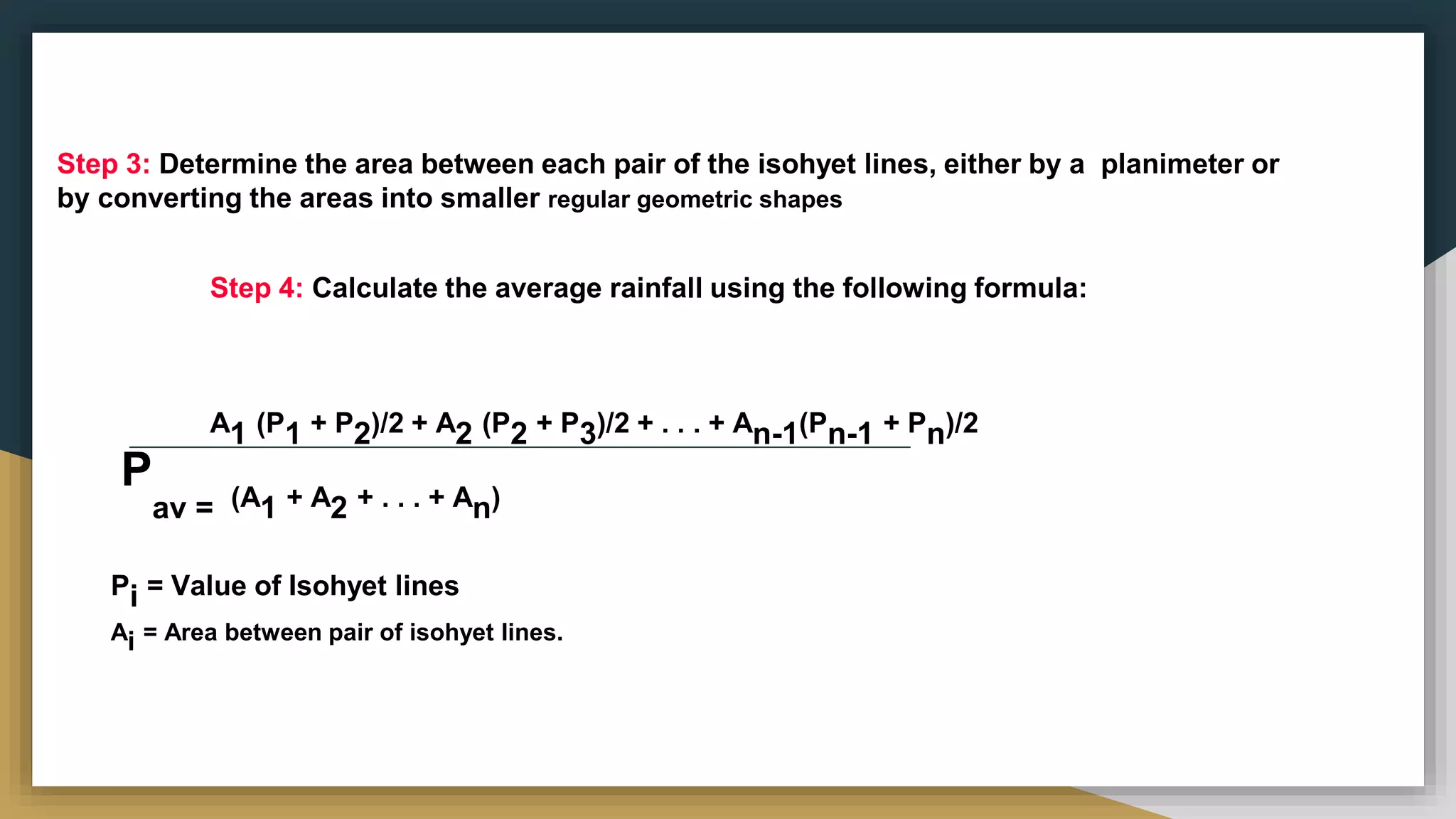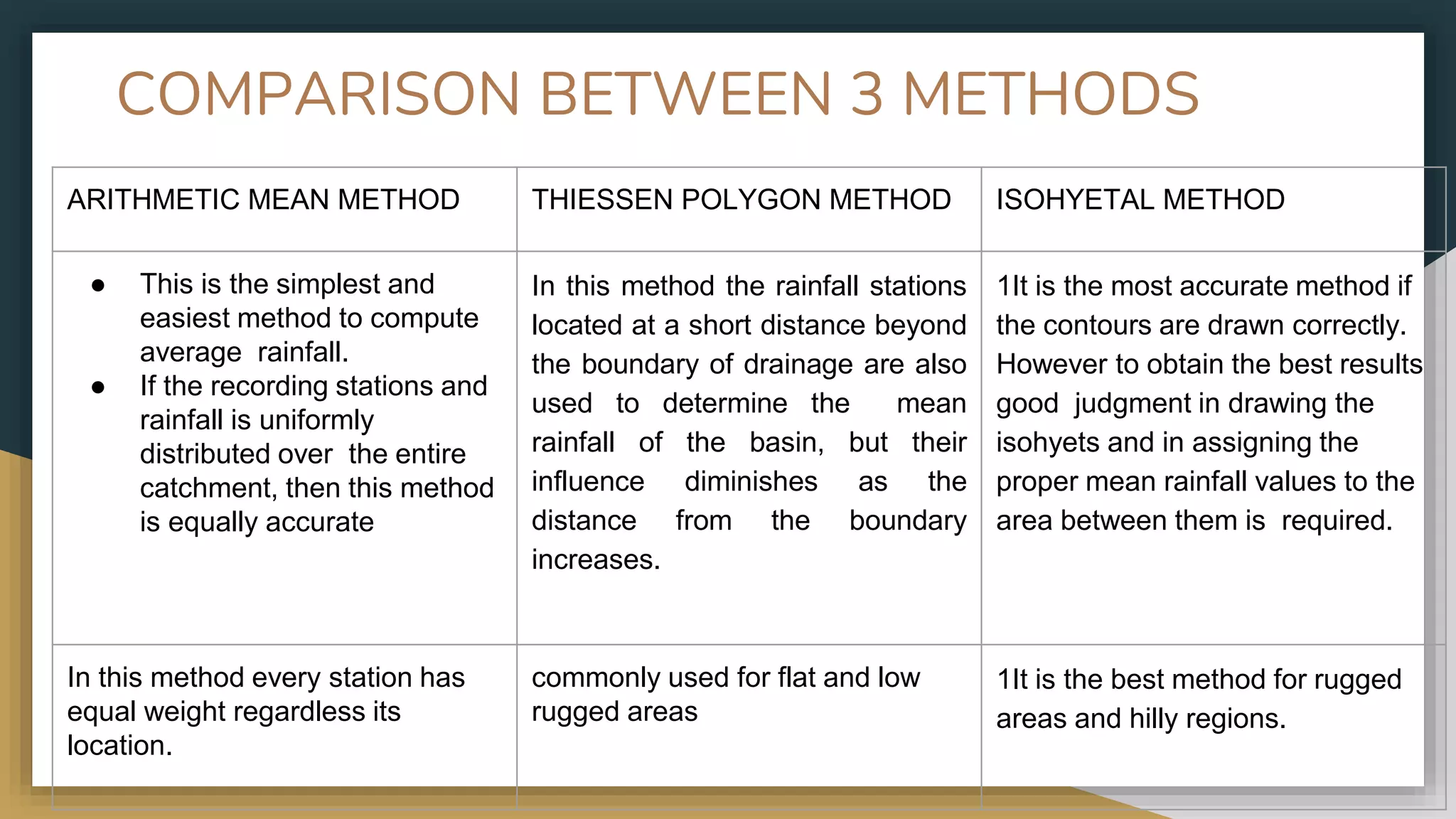The hydrological cycle describes the continuous movement of water on, above, and below the surface of the Earth. Water exists in three forms on Earth - liquid (oceans, lakes, rivers), solid (ice caps, glaciers, snow), and gas (water vapor in the air). The sun drives the hydrological cycle by evaporating water from the surface into the air as vapor, which rises and cools to form clouds. Precipitation occurs when clouds become heavy with water and it falls as rain or snow. Water also returns to the air through evaporation from soil and transpiration from plants. Water running on land and underground replenishes rivers, lakes, and groundwater in a constant cycle powered by energy from

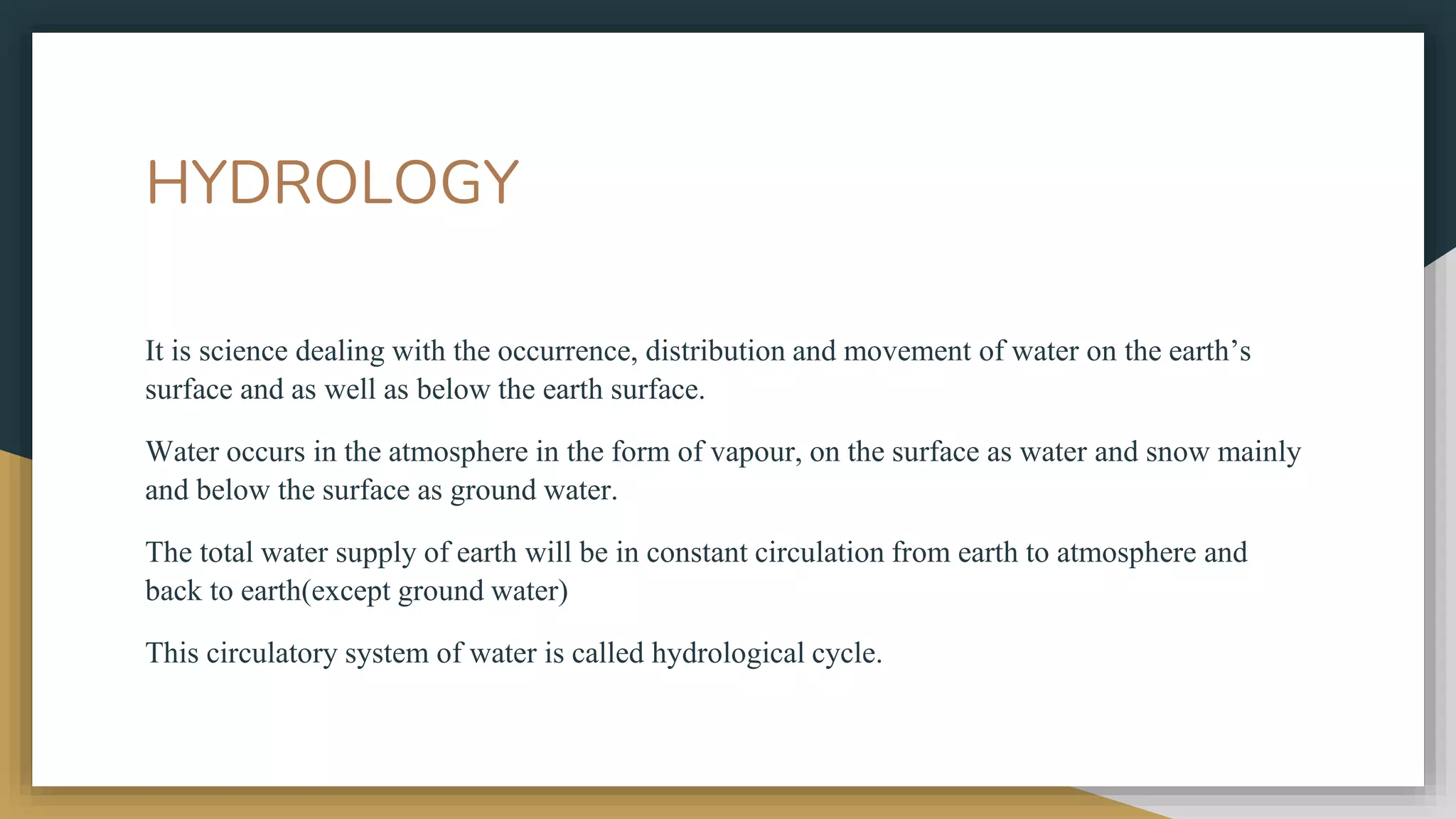
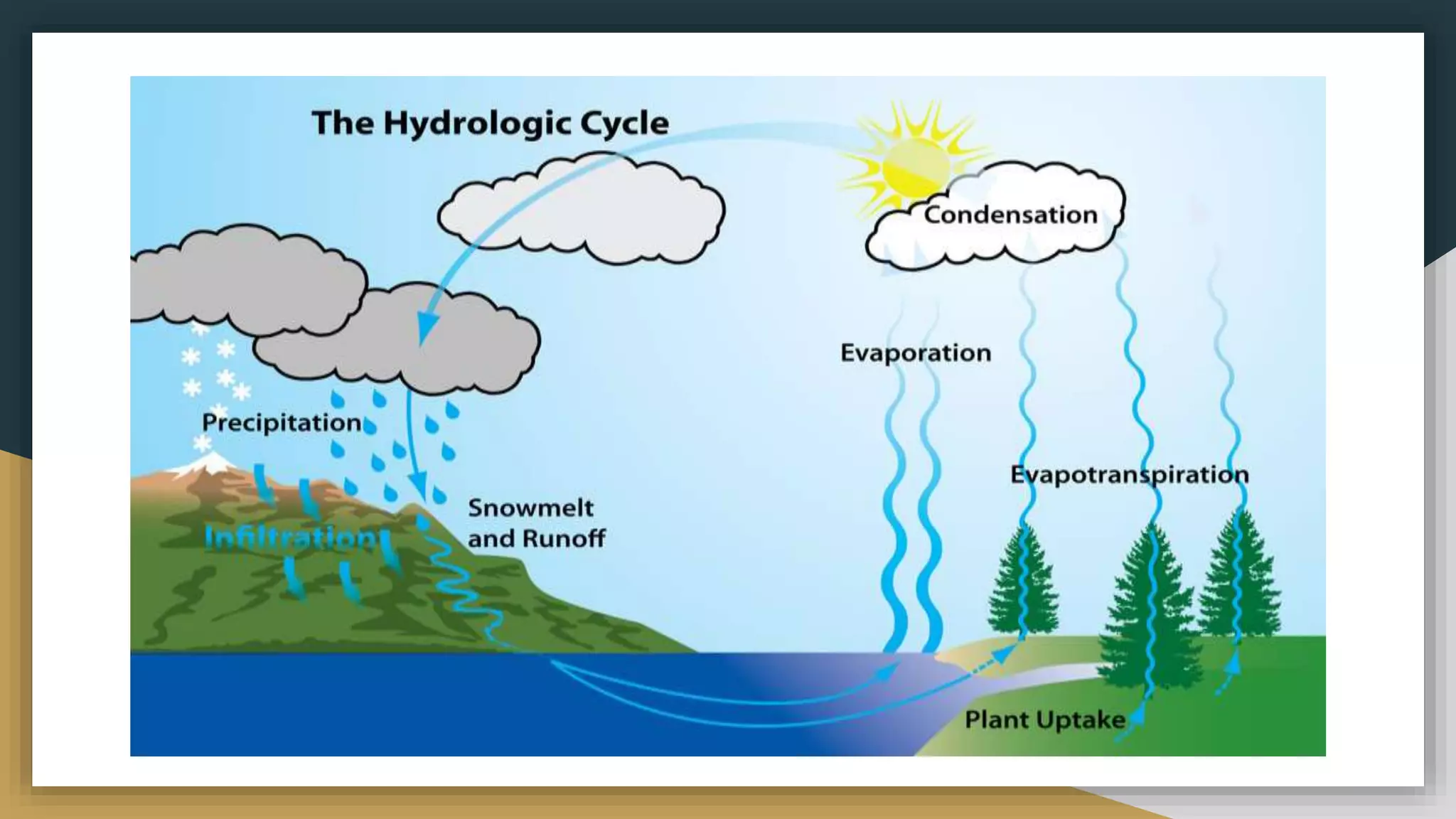
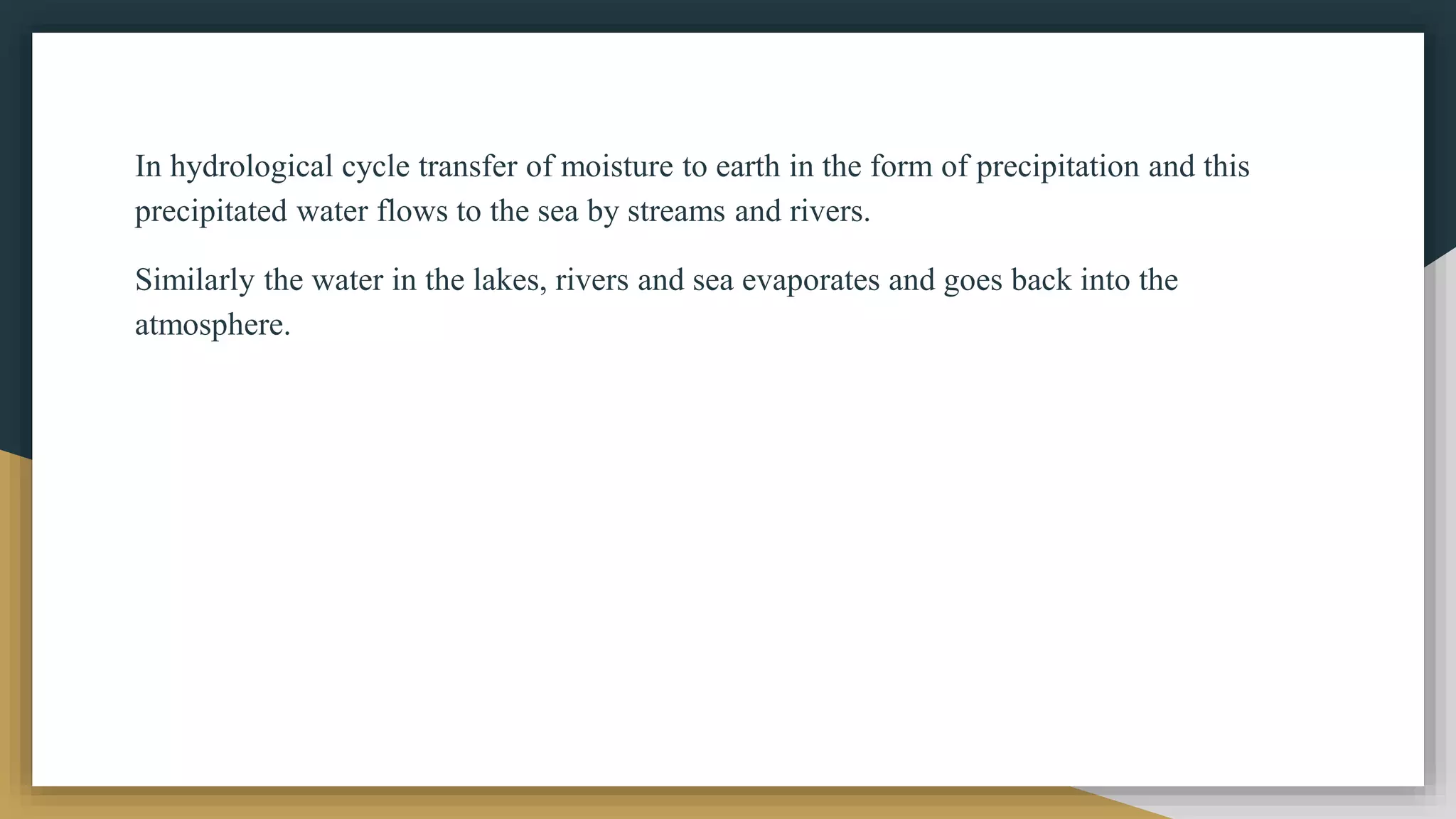
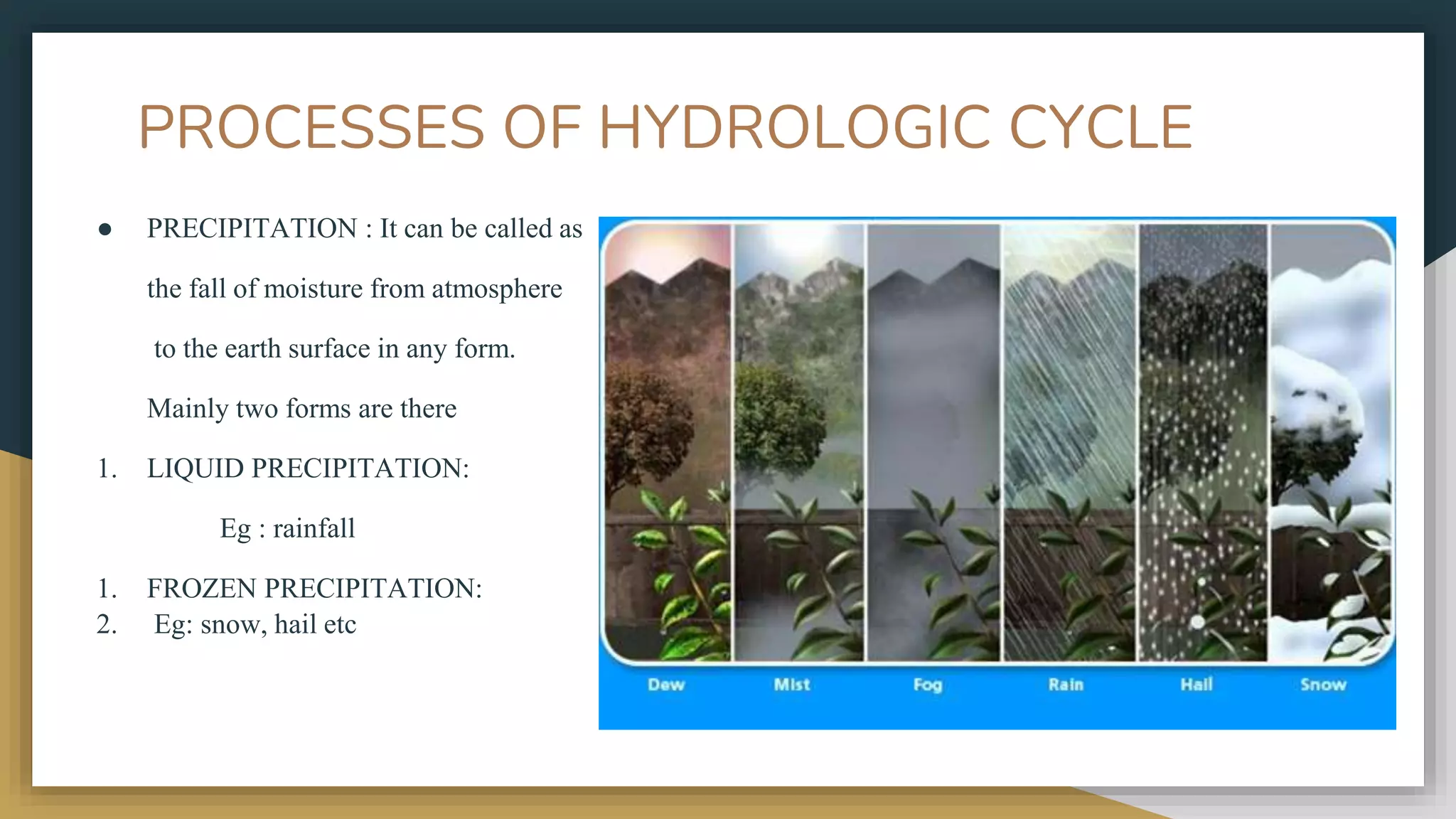


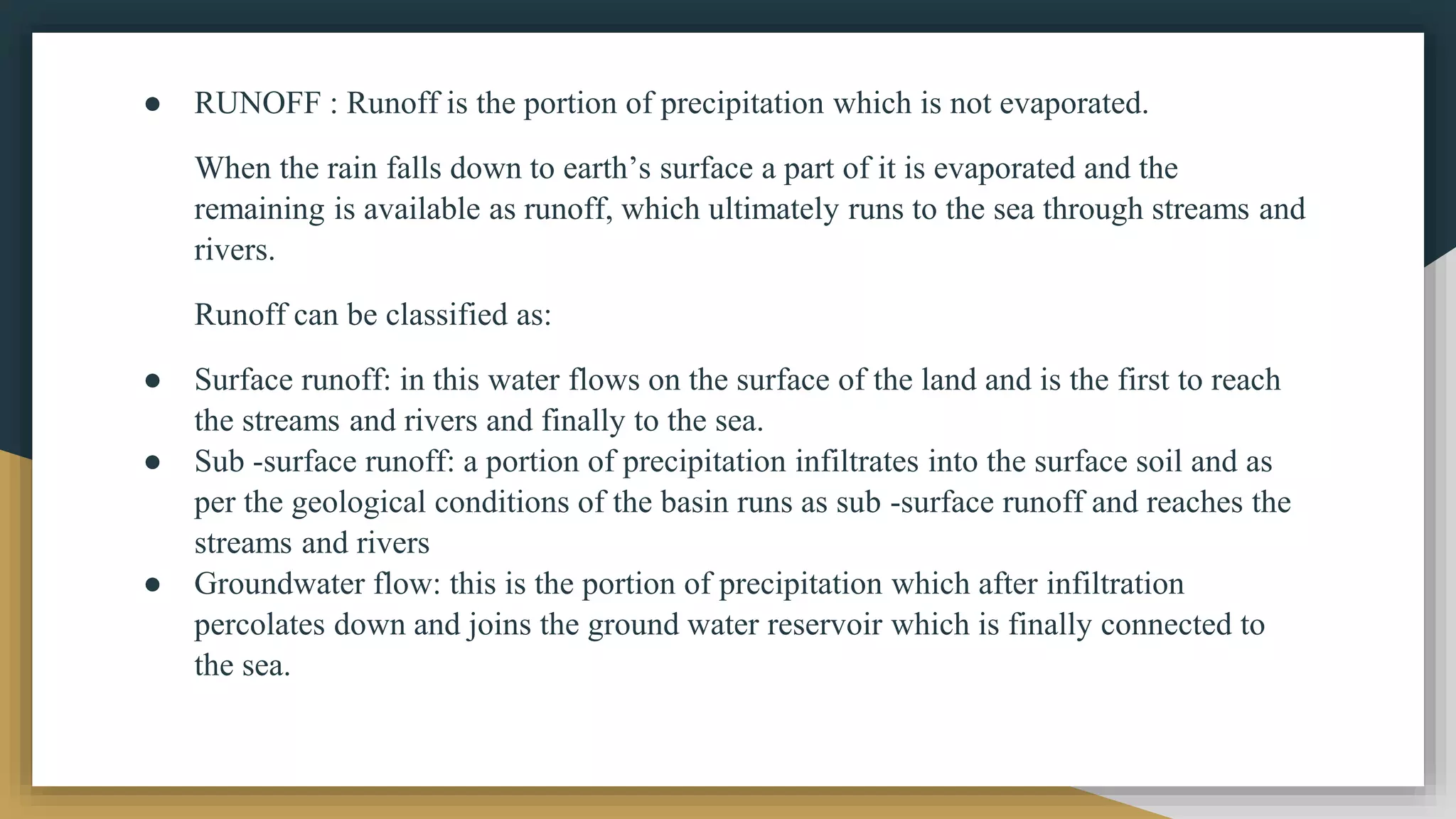
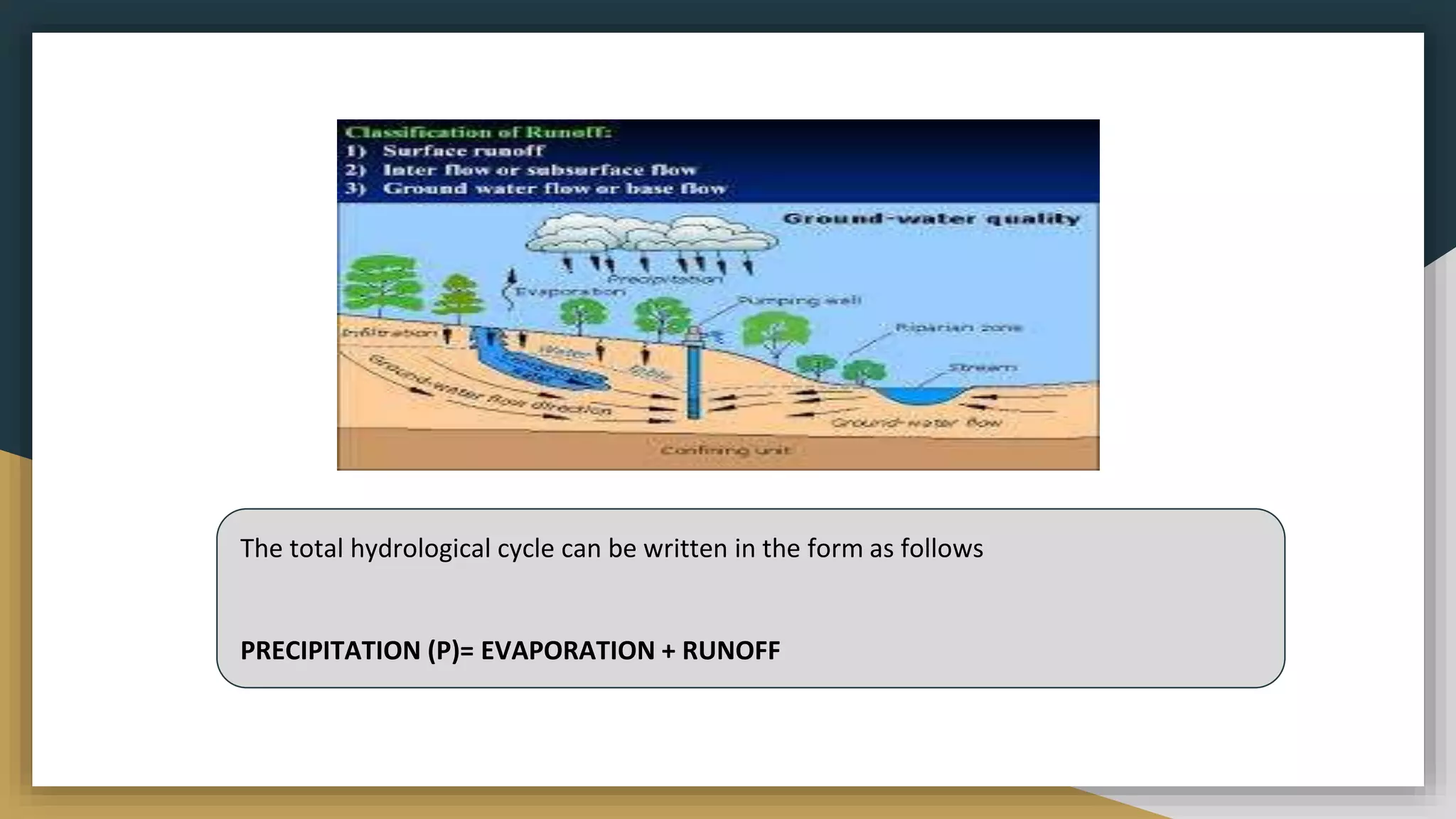
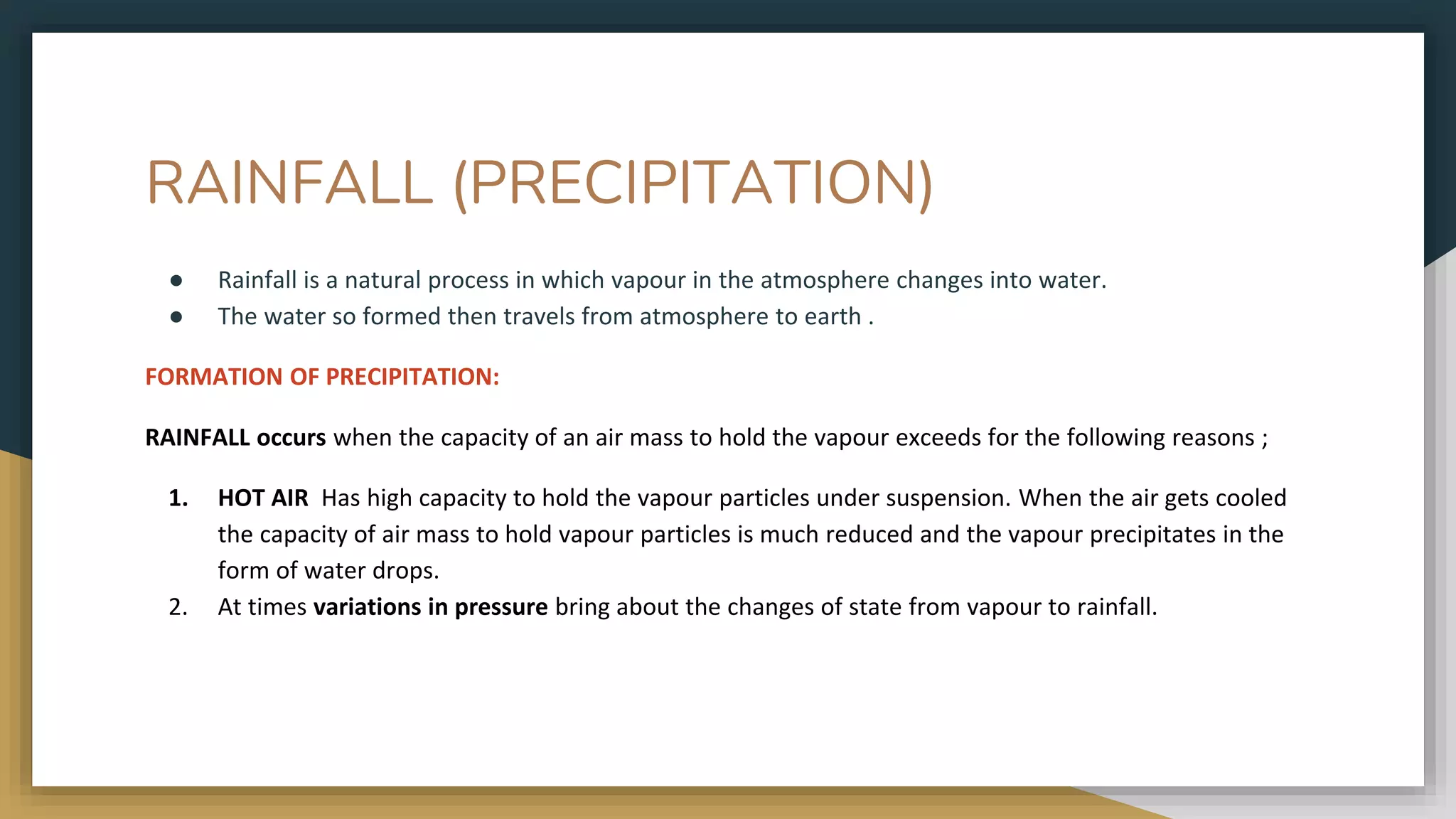
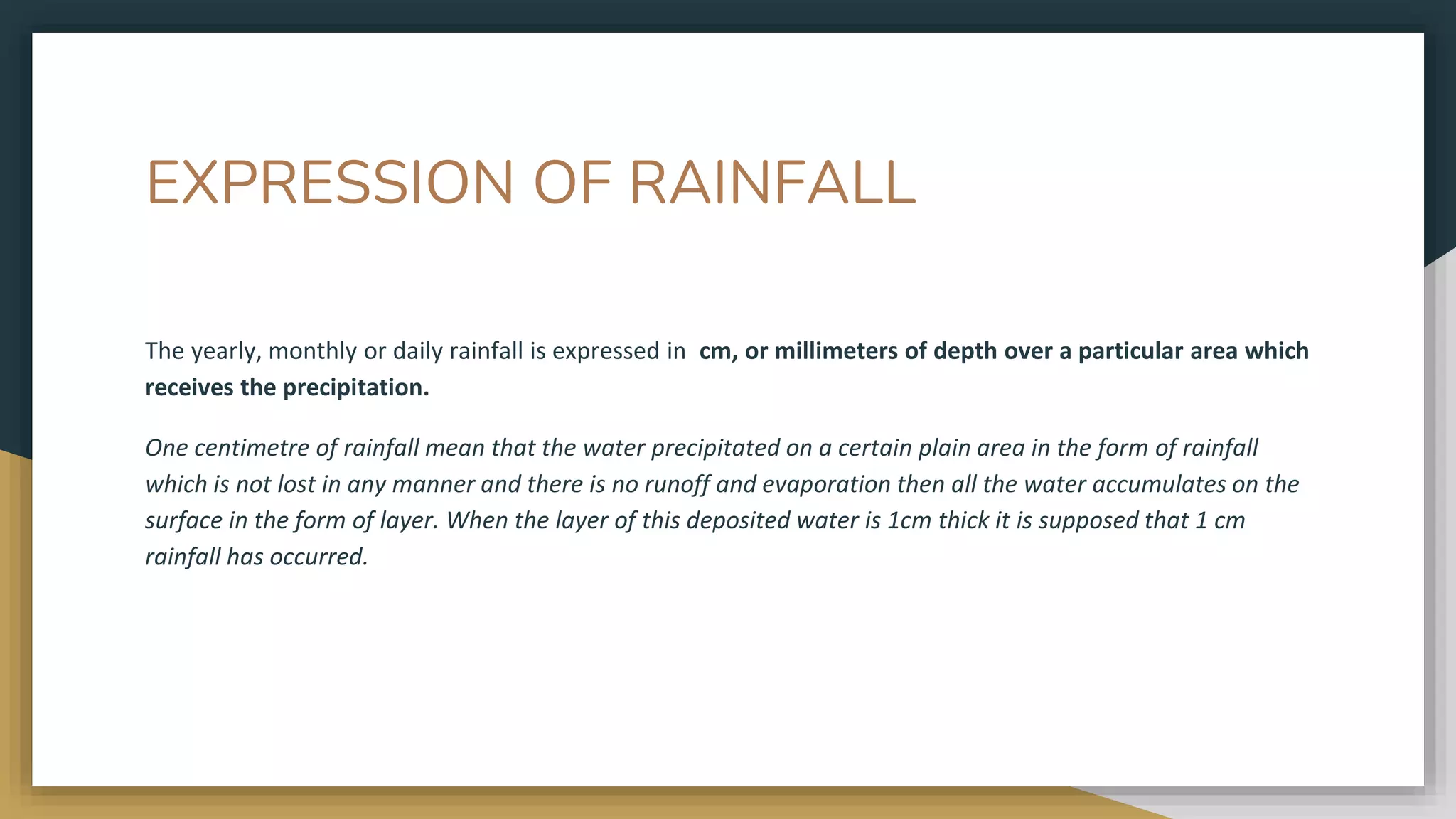
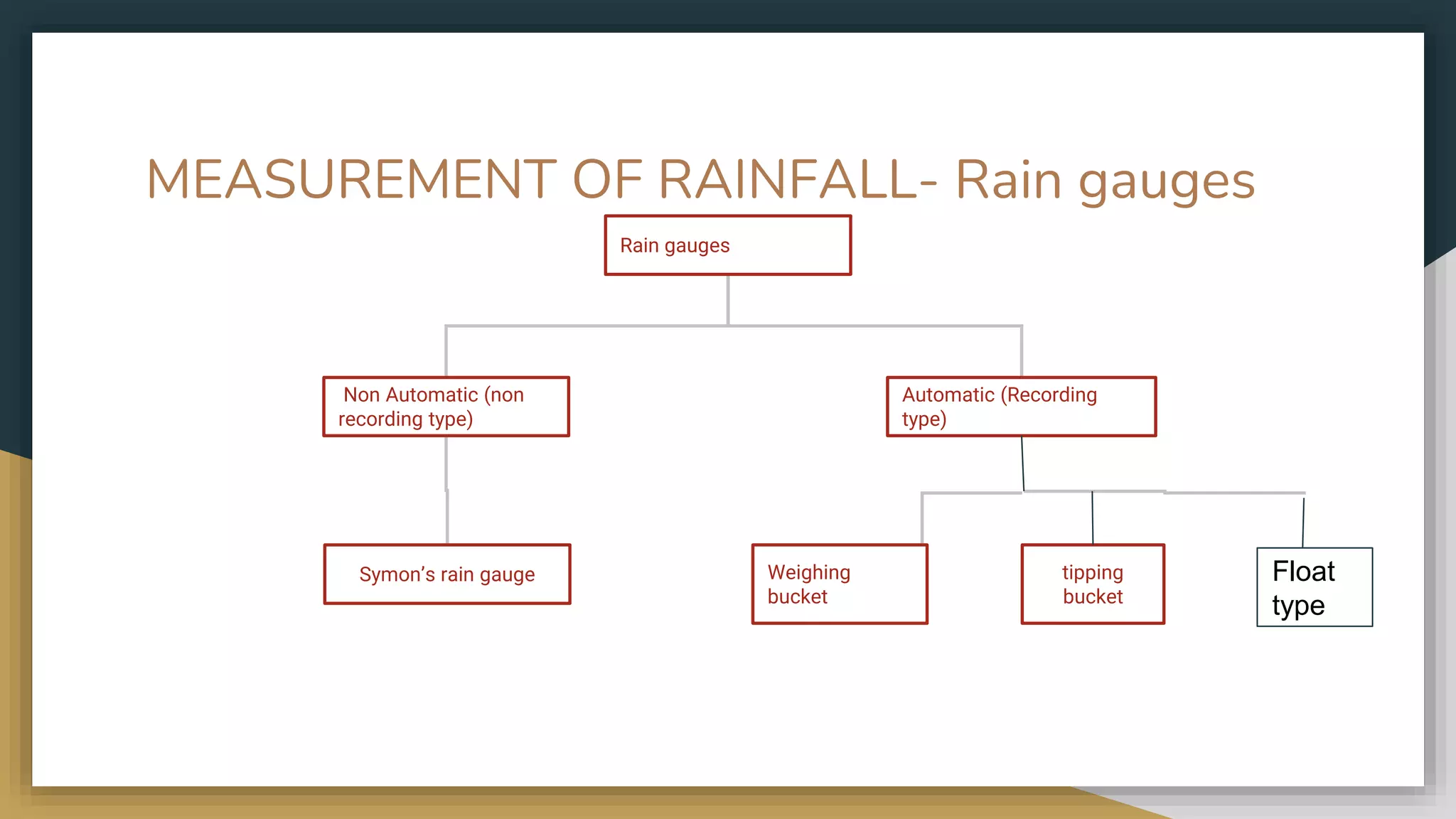
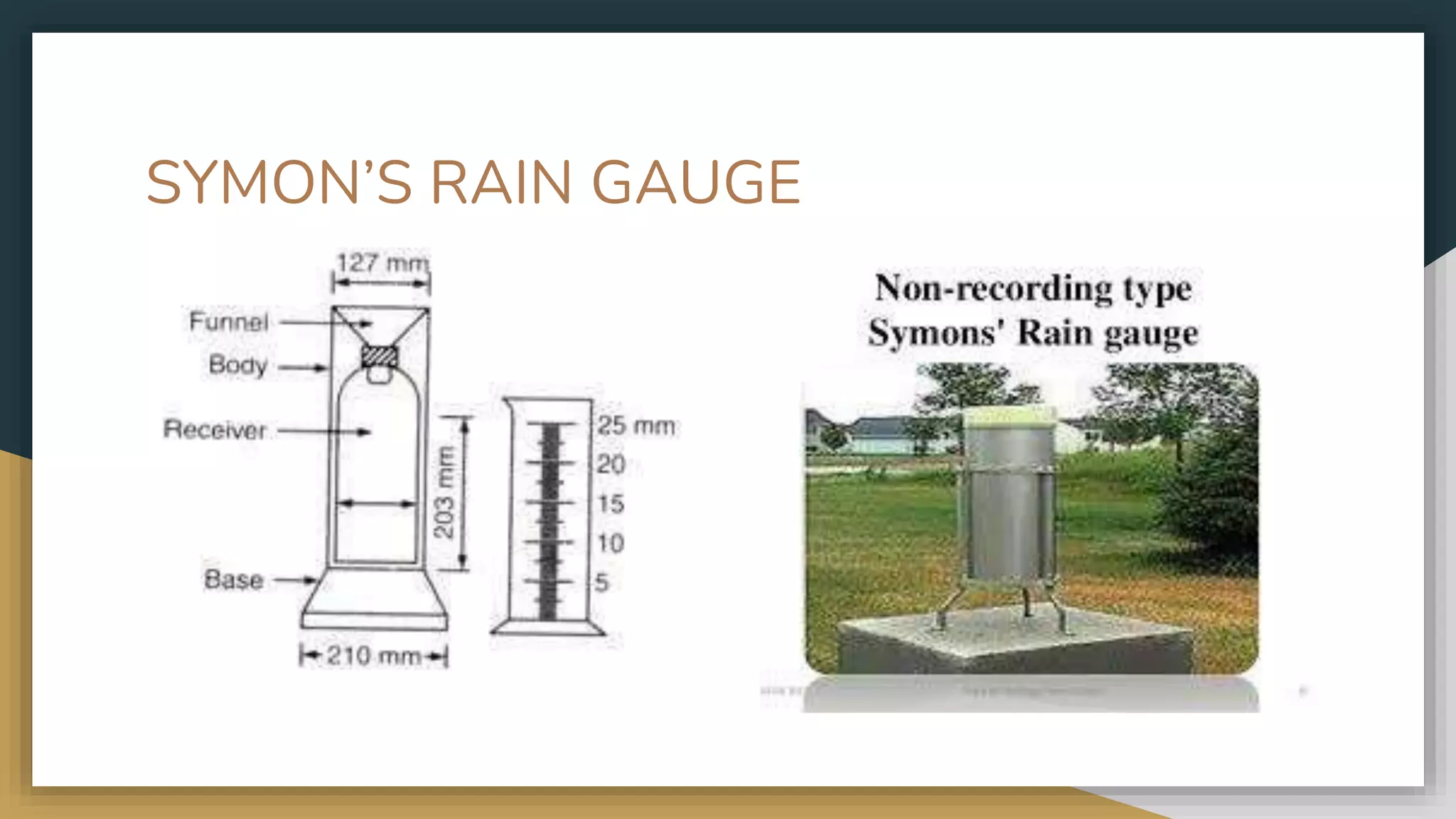

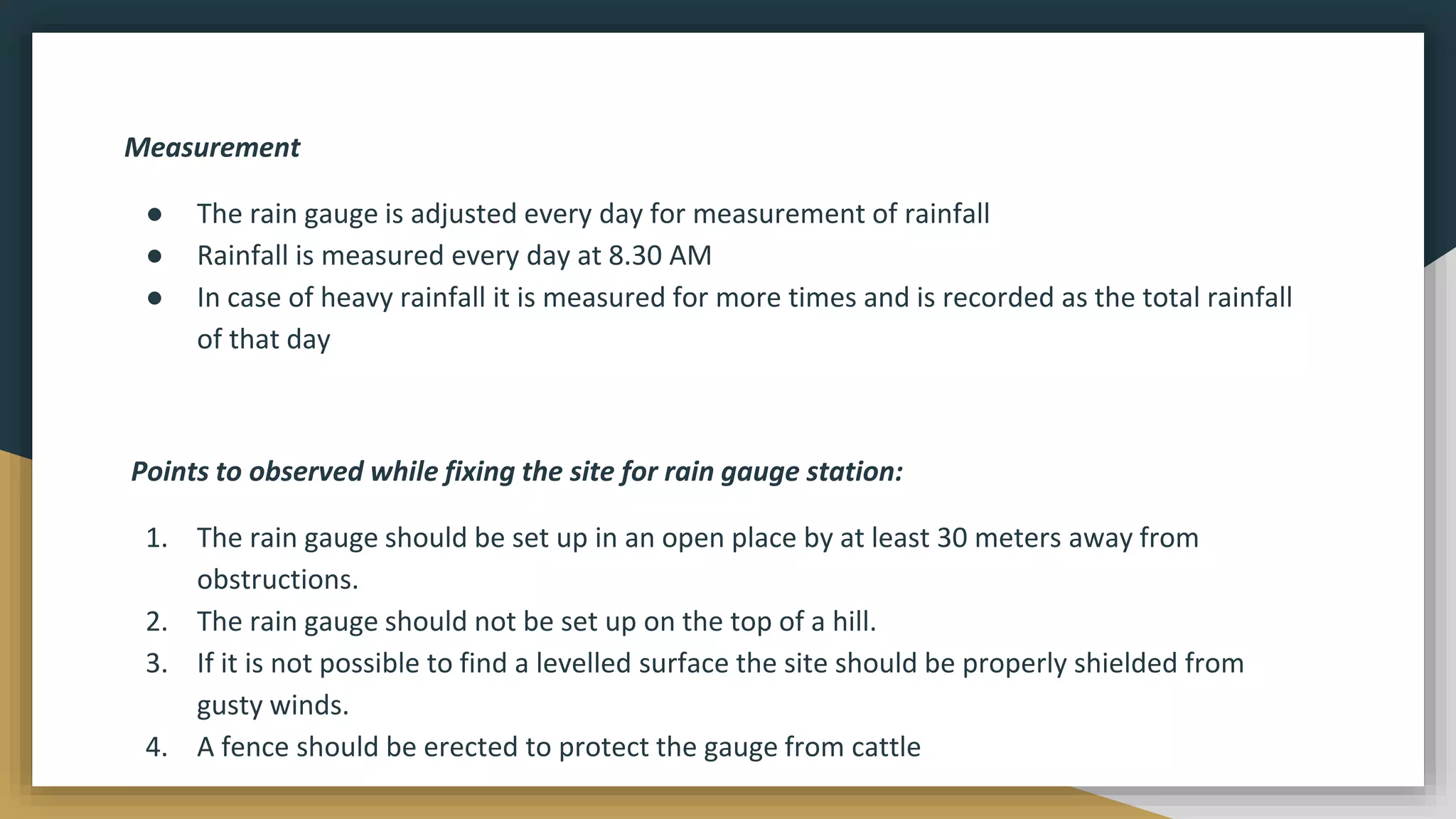
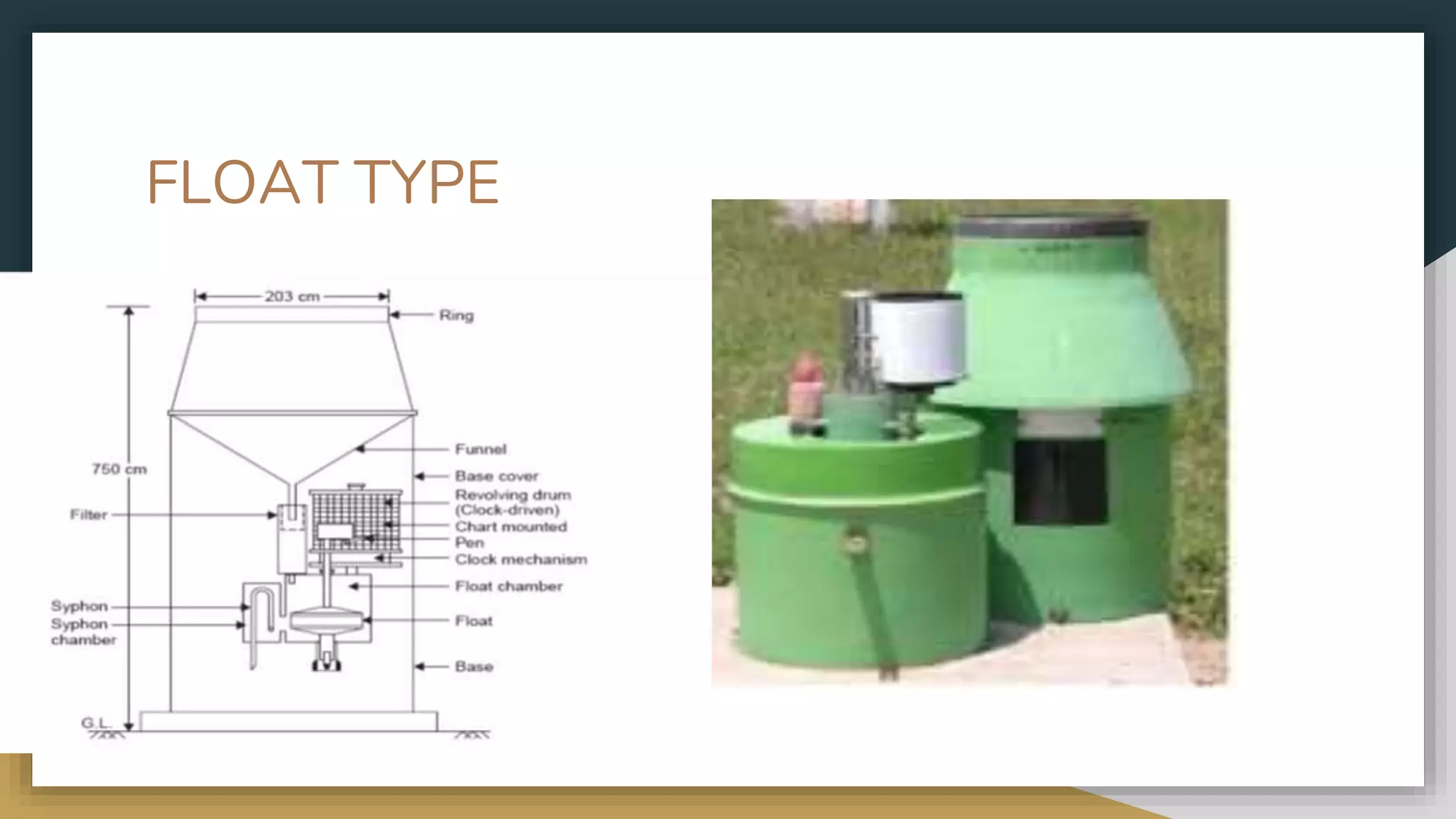

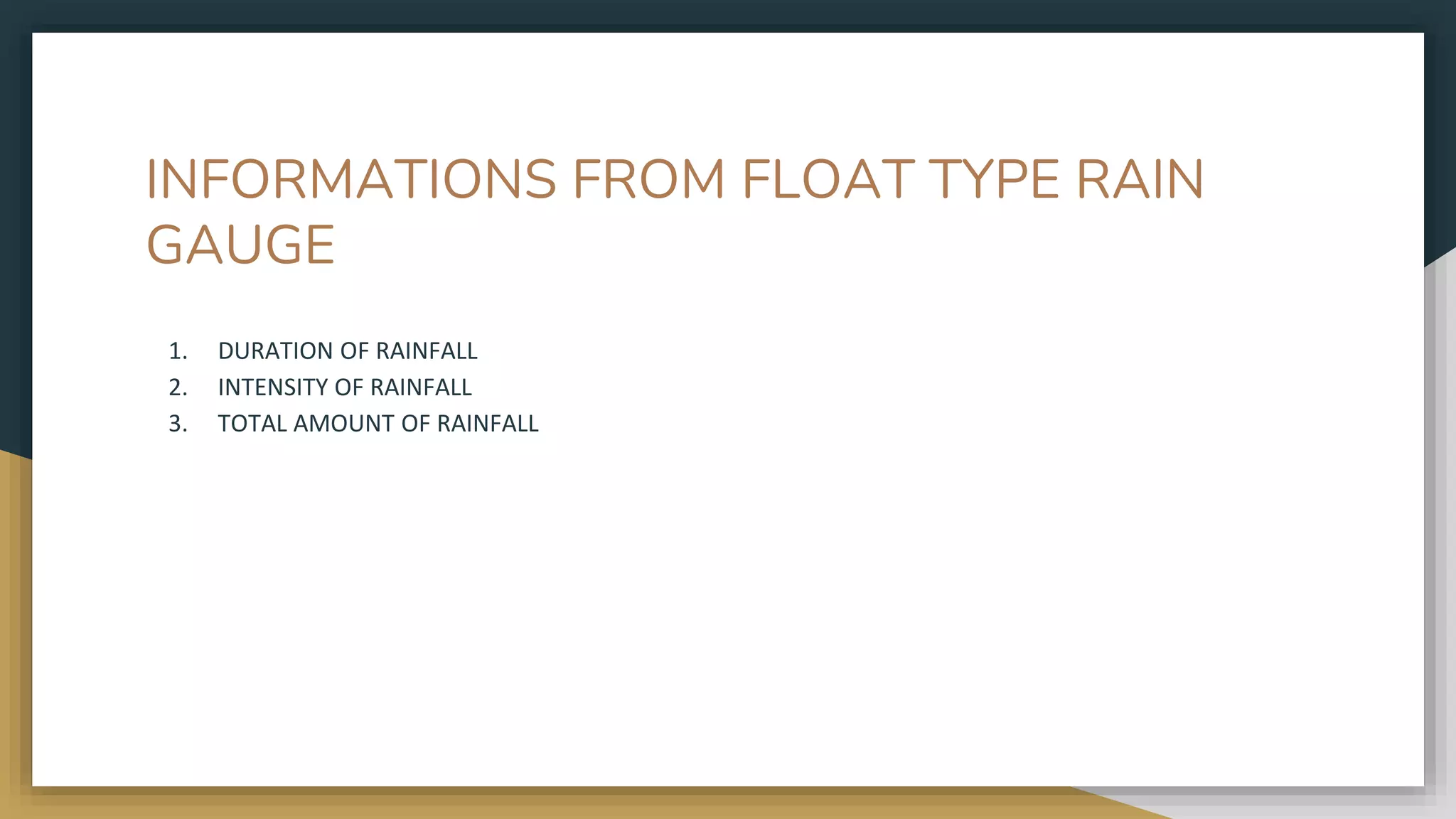


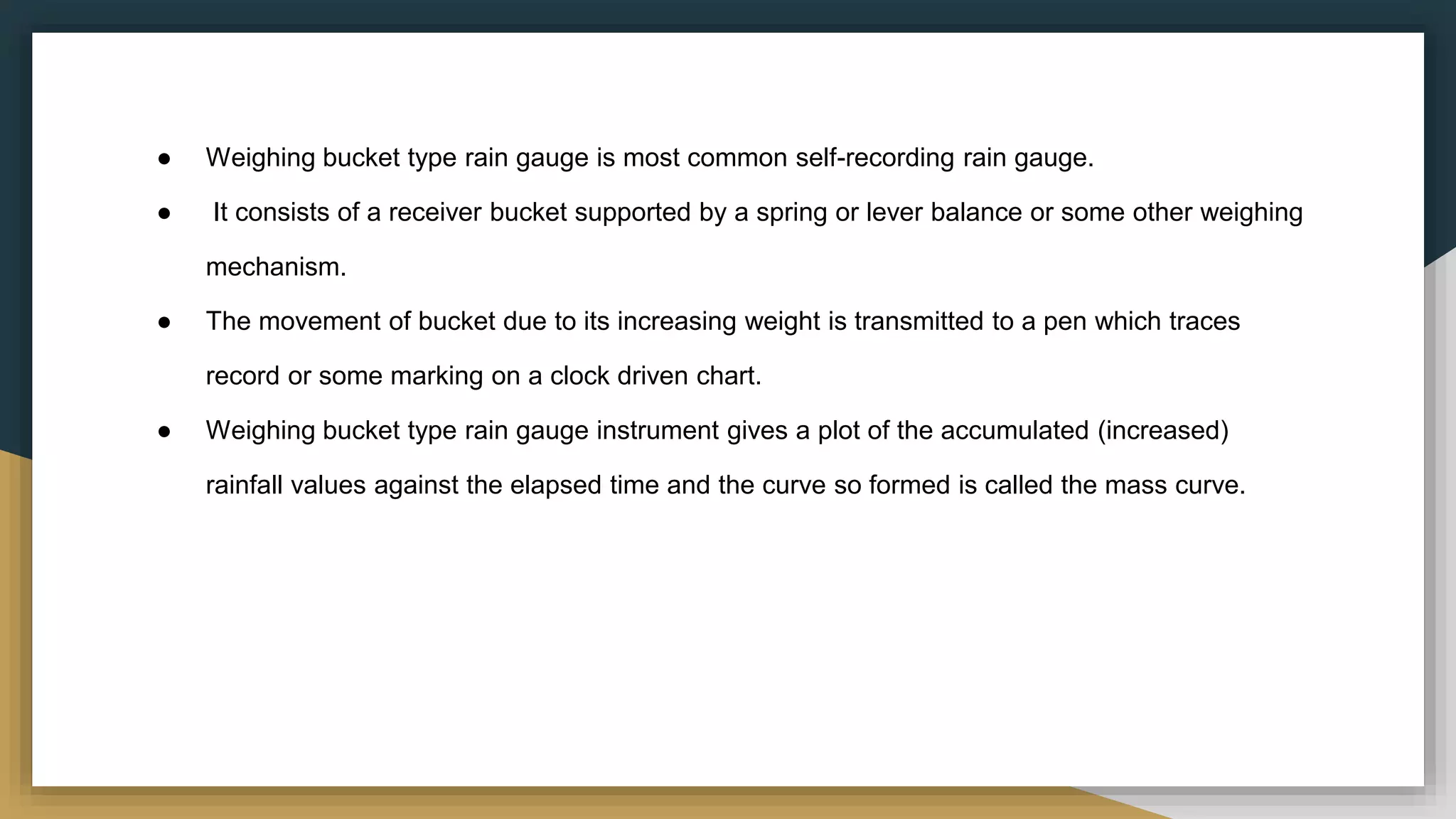
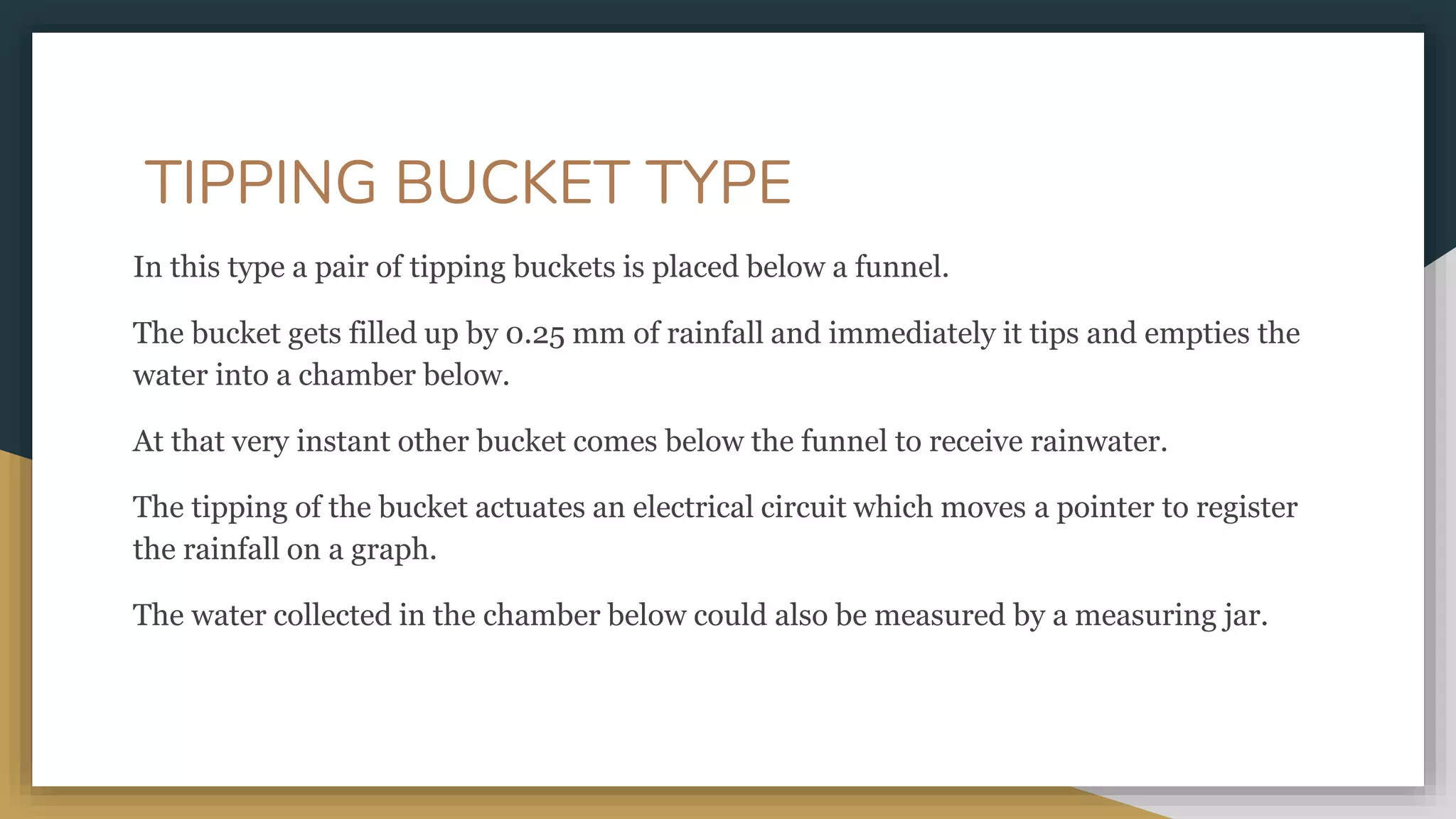

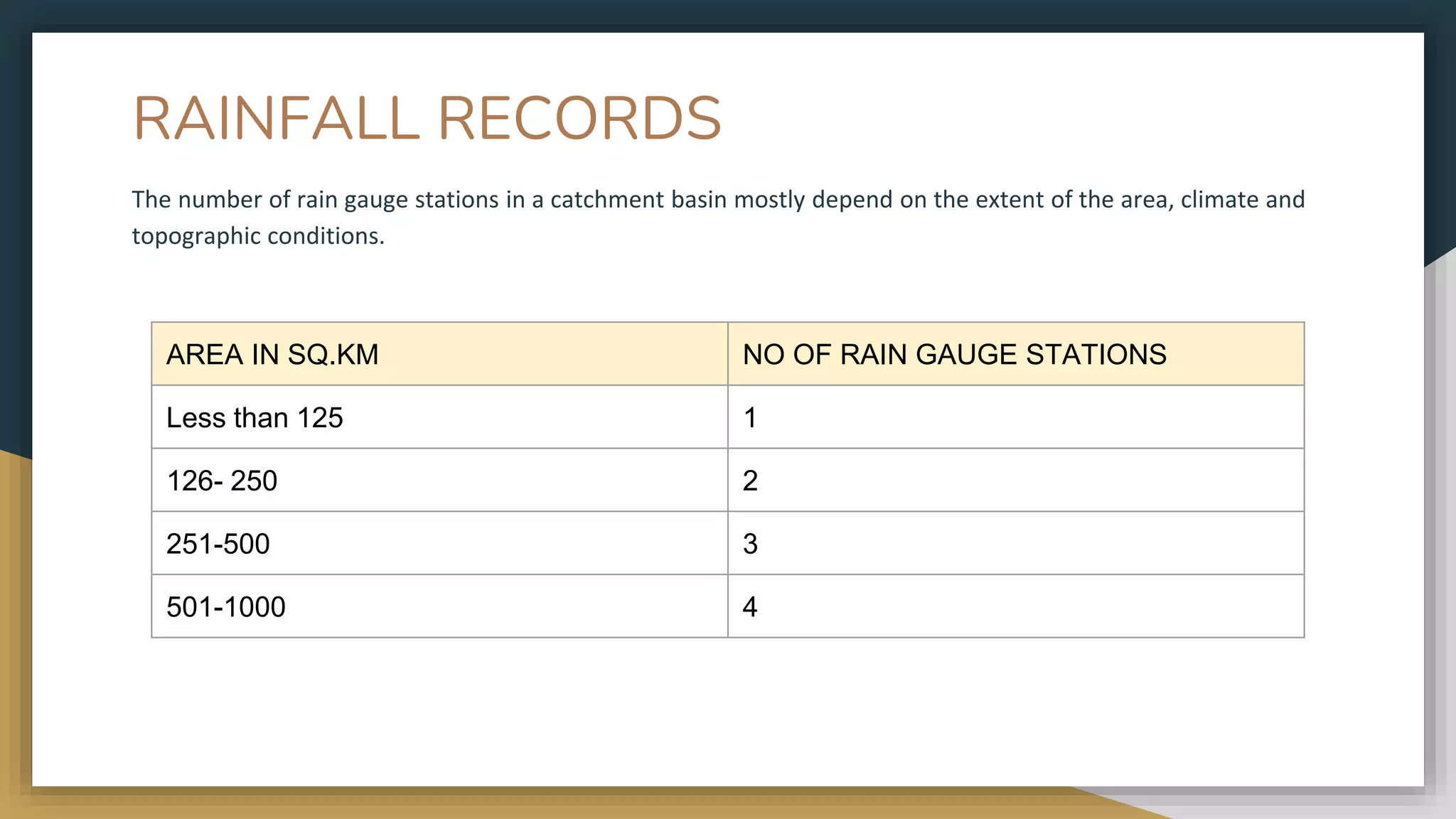

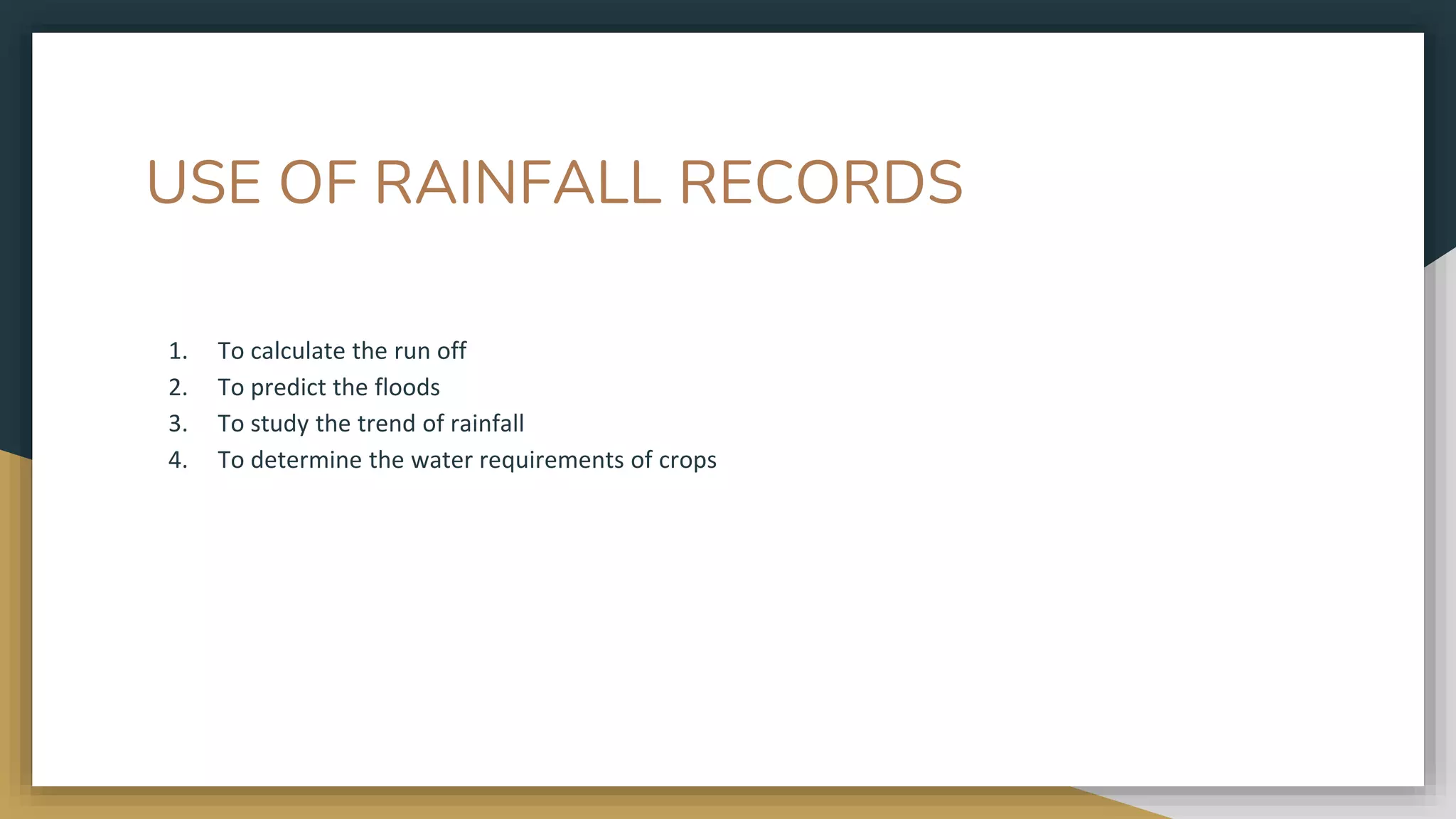

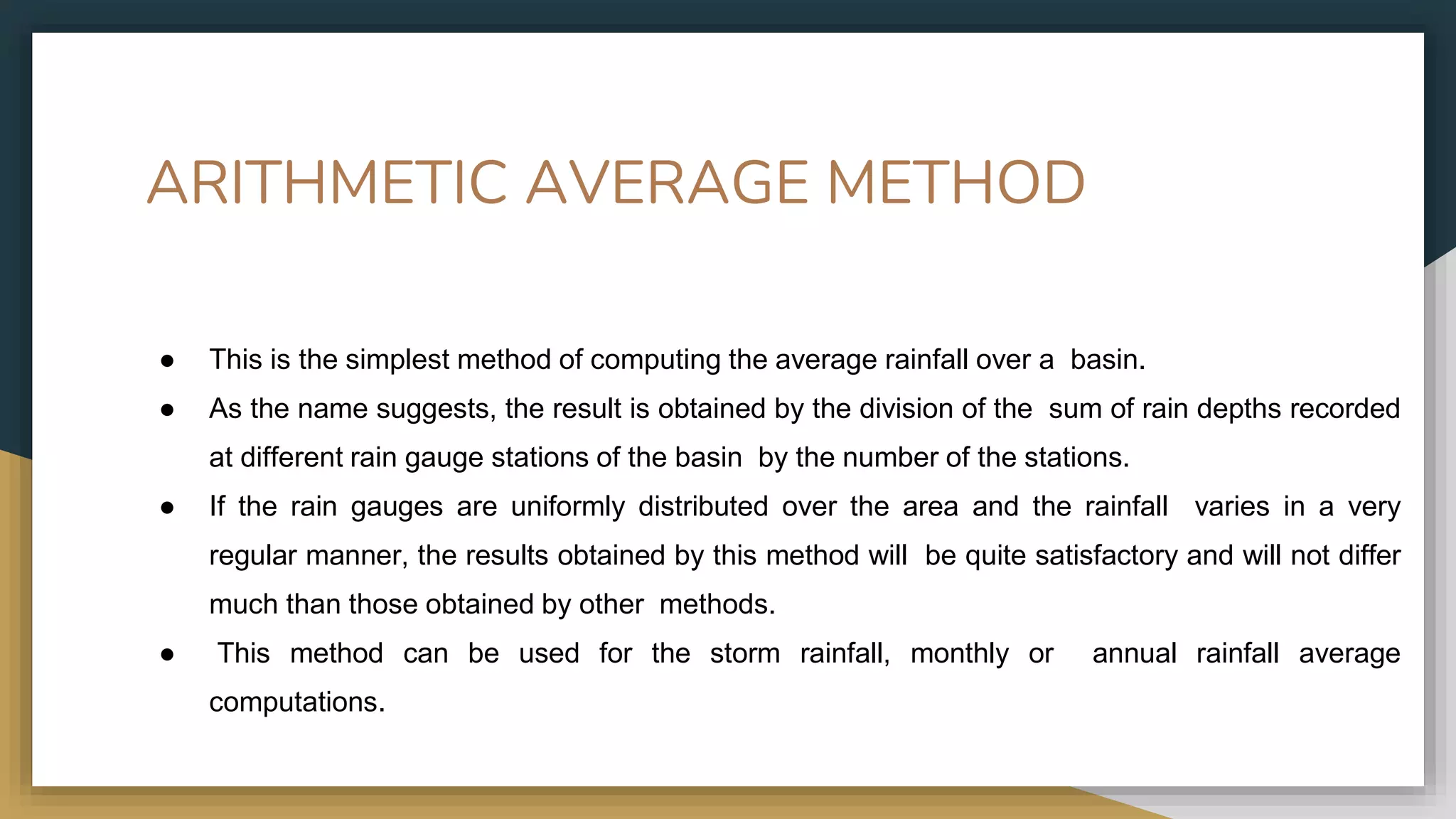
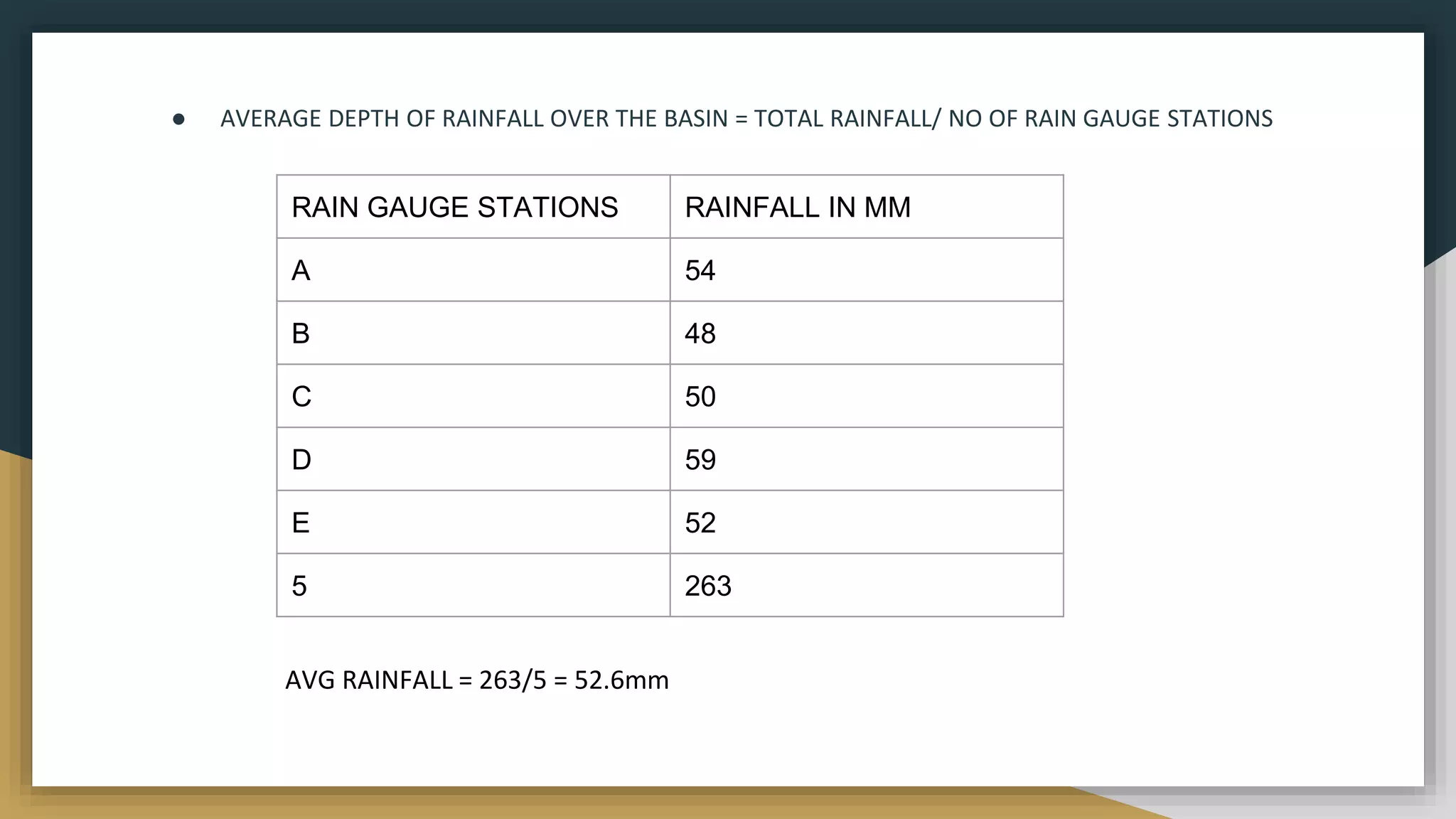


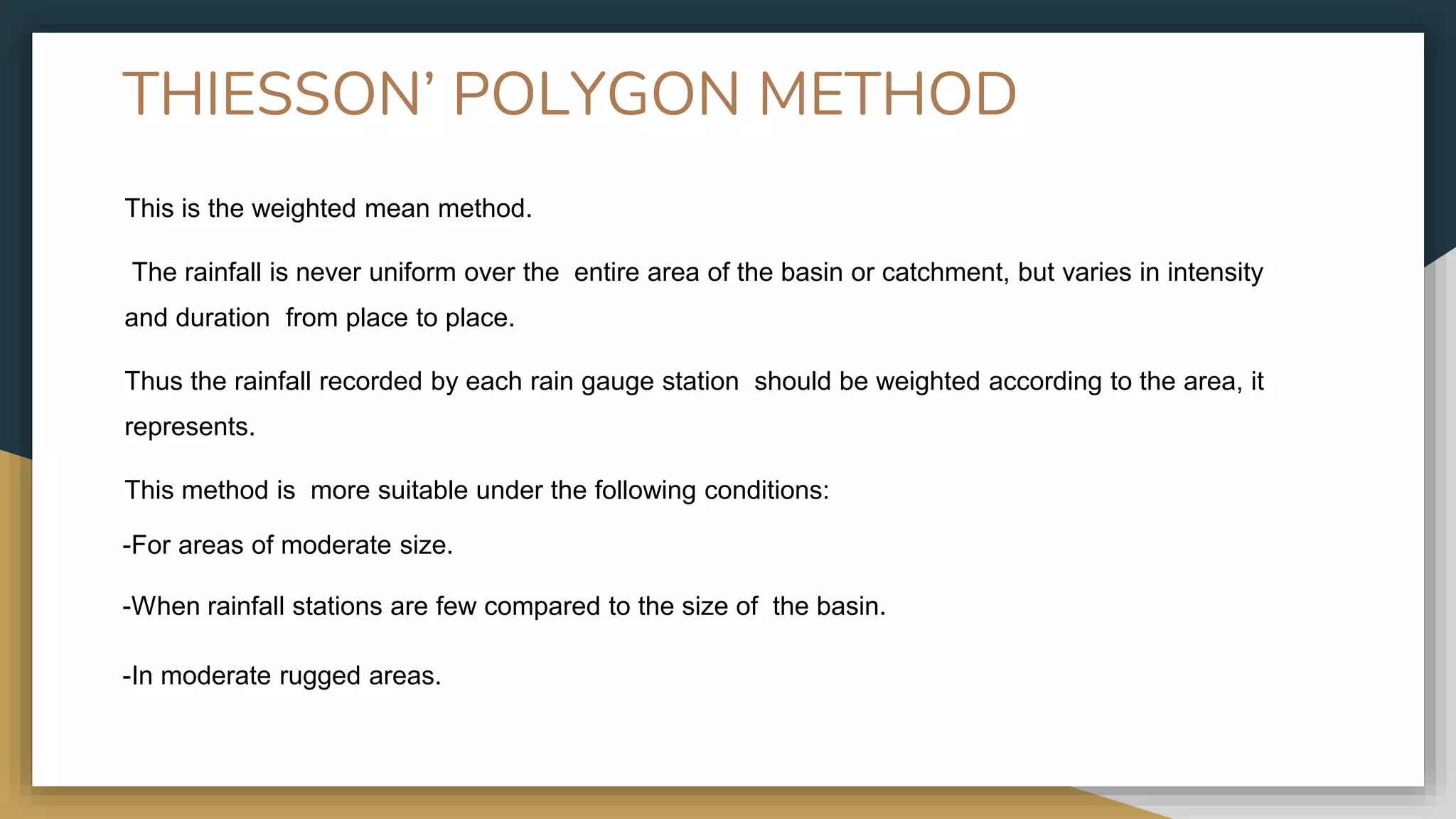
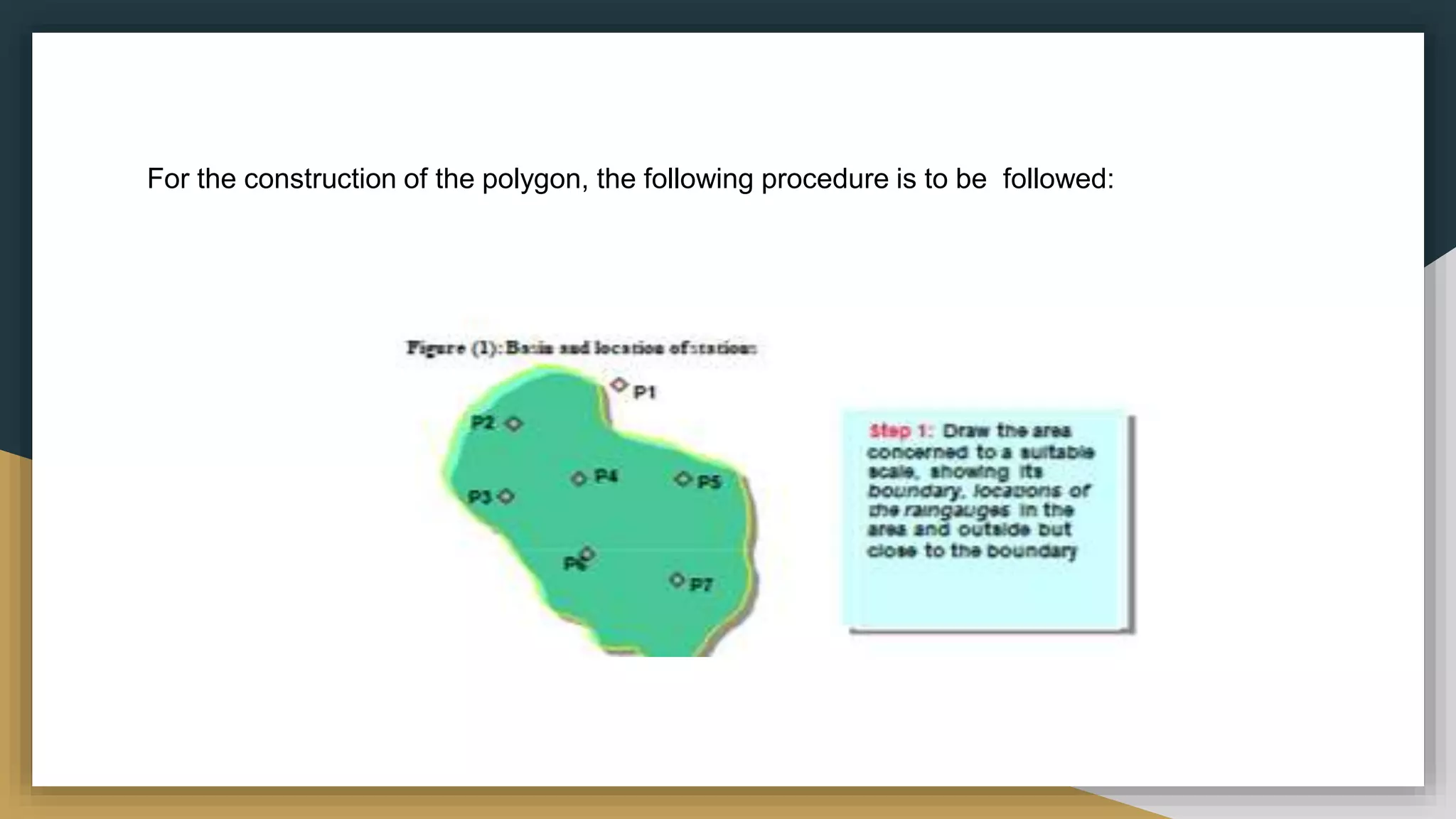



![Station No. Bi-sectional
areas (Ai)
[km2]
Measured
precipitation (Pi)
[mm]
(Col. 2 * Col. 3)
(Ai *Pi)
P1 25 10 250
P2 125 15 1875
P3 80 20 1600
P4 90 17 1530
P5 120 25 3000
P6 115 40 4600
P7 130 12 1560
Total 685 14415](https://image.slidesharecdn.com/1modulehydrology1-210307100046/75/1-module-hydrology-1-37-2048.jpg)


